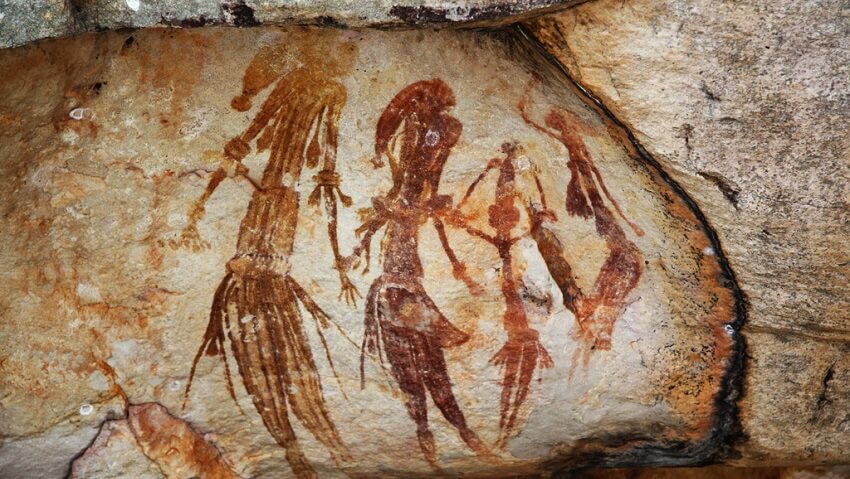The First Australians grew to a population of millions
1 May 2021
/The Conversation
The number is much more than previous estimates.

Gwion Gwion rock art found in the north-west Kimberley region of Western Australia. Credit: Wikimedia Commons.
By Corey J. A. Bradshaw, Flinders University; Alan N Williams, UNSW; Frédérik Saltré, Flinders University; Kasih Norman, University of Wollongong, and Sean Ulm, James Cook University
We know it is more than 60,000 years since the first people entered the continent of Sahul — the giant landmass that connected New Guinea, Australia and Tasmania when sea levels were lower than today. But where the earliest people moved across the landscape, how fast they moved, and how many were involved, have been shrouded in mystery.
Our latest research, published today shows the establishment of populations in every part of this giant continent could have occurred in as little as 5,000 years. And the entire population of Sahul could have been as high as 6.4 million people.
This translates to more than 3 million people in the area that is now modern-day Australia, far more than any previous estimate.
The first people could have entered through what is now western New Guinea or from the now-submerged Sahul Shelf off the modern-day Kimberley (or both). But whichever the route, entire communities of people arrived, adapted to and established deep cultural connections with Country over 11 million square kilometres of land, from northwestern Sahul to Tasmania.
More:
https://cosmosmagazine.com/history/archaeology/the-first-australians-grew-to-a-population-of-millions-much-more-than-previous-estimates/
